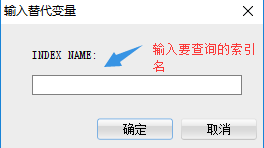3.1、创建表空间和用户授权:
1、创建表空间:
CREATE TABLESPACE <表空间名> LOGGING DATAFILE ‘<存放路径>’ SIZE 50M AUTOEXTEND ON NEXT 50M MAXSIZE 31768M EXTENT MANAGEMENT LOCAL;
#windows存放路径:D:\app\Administrator\oradata\orcl\lc_data.dbf
#linux存放路径:/application/oracle/oradata/orcl/lc_data.dbf
2、创建用户并指定表空间:
CREATE USER <用户名> IDENTIFIED BY <密码> DEFAULT TABLESPACE <表空间名>;
#一个用户只有一个表空间,而表空间可以有多个用户;
3、给用户授予权限:
grant connect,resource,dba to <用户名>;
3.2、删除表空间:
1、删除用户:
drop user <用户名> cascade;
2、删除表空间:
drop tablespace <表空间名> including contents and datafiles cascade constraints;
#including contents:删除表空间中的内容,如果删除表空间之前表空间中有内容,而未加此参数,表空间无法删除;
#including datafiles:删除表空间中的数据文件;
#cascade constraints:删除表空间中表的外键参照;
3.3、表空间查询操作:
1、查询所有表空间及对应的路径:
select tablespace_name,file_name from dba_data_files;
2、查询所有表空间的状态信息;
select tablespace_name,status from dba_tablespaces;
3、增加表空间大小:
ALTER TABLESPACE <表空间名> ADD DATAFILE ‘<存放路径>’ SIZE 50M AUTOEXTEND ON NEXT 50M MAXSIZE UNLIMITED;
4、查看所有用户以及对应的表空间:
select username,default_tablespace from dba_users;
5、查看当前用户的缺省表空间:
select username,default_tablespace from user_users;
6、表空间之间的链接:
(1)创建表空间之间的链接:
create database link TO_<表空间名>_LINK connect to <用户名> identified by <密码> using ‘<数据库实例名>’;
(2)查询表空间之间的链接:
select * from <当前表空间名>@TO_<表空间名>_LINK;
(3)删除表空间之间的链接:
drop database link TO_<表空间名>_LINK;
7、查询所有表空间的用量:
select tablespace_name,count(*) AS extends,round(sum(bytes)/1024/1024,2) AS MB,sum(blocks) AS blocks from dba_free_space group BY tablespace_name;
8、查看序列号,last_number是当前值:
select * from user_sequences;
9、修改表空间属性(离线):
alter tablespace <表空间名> offline;
10、修改表空间属性(在线):
alter tablespace <表空间名> online;
11、修改表空间属性(只读):
alter tablespace <表空间名> read only;
12、修改表空间属性(读写)
alter tablespace <表空间名> read write;
13、修改session的时间格式:
alter session set nls_date_format=’yyyy-mm-dd’;
3.4、索引操作:
1、创建单一索引:
create index <索引名> on <表名>(<列名1>);
2、创建组合索引:
create index <索引名> on <表名>(<列名1>,<列名2>);
select * from <表名> where <列名1>='<字符>’
#走索引
select * from <表名> where <列名2>='<字符>’
#不走索引
select * from <表名> where <列名1> like ‘%<字符>%’
#不走索引
select * from <表名> where <列名1>='<字符>’ and <列名2>='<字符2>’
#走索引
select * from <表名> where <列名1>='<字符>’ or <列名2>='<字符2>’
#不走索引
drop index <索引名称>;
#删除索引
3、查看索引的方法:
(1)在当前用户中查找表名:
select * from user_tables where table_name like ‘<表名>%’;
(2)查询该表的所有索引:
select * from user_indexes where table_name='<表名>’;
(3)查询该表的所有索引列:
select * from user_ind_columns where table_name='<表名>’;
(4)查询当前用户所有表的索引和索引类别:
select table_name,index_name,index_type from user_indexes order by index_name;
(5)查看当前用户下指定索引的信息:
select * from user_indexes where index_name=upper(‘&index_name’);
(6)查看当前用户下指定的索引的索引列:
select * from user_ind_columns where index_name=upper(‘&index_name’);
(7)查看当前用户下指定索引的大小:
select sum(bytes)/(1024*1024) as “size(M)” from user_segments where segment_name=upper(‘&index_name’);
(8)补充:
user_indexes #存放着当前用户所有表的索引信息;
user_segments #存放着当前用户所有表的索引大小;
user_ind_columns #存放着当前用户所有表的索引列信息;
4、索引补充:
(1)哪些列适合建索引:
1)经常出现在where子句的列;
2)经常用于表连接的列,在匹配表上进行建索引;
3)该列是高基数数据列,高基数数据列是指有很多不同的值;
4)索引里面不计null值;
5)表很大,查询结果集小;
6)在pk、uk、fk键上建立索引;
7)经常需要排序”order by”和分组”group by”的列;
(2)索引用不了的写法:
1)函数导致索引用不了 where upper(colname)= ‘char’;
2)可以对函数建索引:
create index <索引名> on <表名>(round(<列名1>));
3)表达式导致索引用不了 where colname*12=1200;
4)索引不是万能的;
(3)索引结构:
1)分析索引结构有效性:
analyze index <索引> validate structure;
一般来讲默认的方式是offline;
当以offline的模式analyze索引时,会对table加一个表级共享锁,对目前table的一些实时DMl操作会产生一定的影响;
而以online模式分析时候,则不会加任何lock,但在index_stats中是看不到任何信息的;
2)查看索引结构:
select NAME,HEIGHT,BLOCKS,BR_BLKS,BR_ROWS,LF_BLKS,LF_ROWS from index_stats;
3)合并索引叶级块碎片:
alter index <索引名> coalesce;
4)重建索引:
alter index <索引名> rebuild;
转自:https://www.cnblogs.com/LiuChang-blog/p/12315505.html
